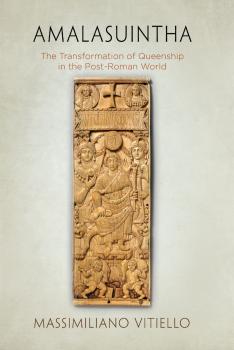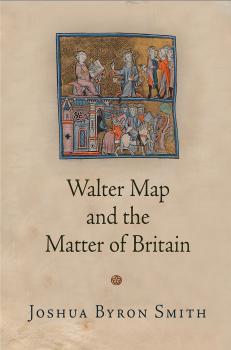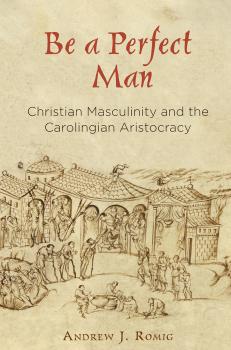ТОП просматриваемых книг сайта:















История
Различные книги в жанре История, доступные для чтения и скачиванияАннотация
In the conventional historical narrative, the medieval Middle East was composed of autonomous religious traditions, each with distinct doctrines, rituals, and institutions. Outside the world of theology, however, and beyond the walls of the mosque or the church, the multireligious social order of the medieval Islamic empire was complex and dynamic. Peoples of different faiths—Sunnis, Shiites, Christians, Jews, and others—interacted with each other in city streets, marketplaces, and even shared households, all under the rule of the Islamic caliphate. Laypeople of different confessions marked their religious belonging through fluctuating, sometimes overlapping, social norms and practices. In Between Christ and Caliph , Lev E. Weitz examines the multiconfessional society of early Islam through the lens of shifting marital practices of Syriac Christian communities. In response to the growth of Islamic law and governance in the seventh through tenth centuries, Syriac Christian bishops created new laws to regulate marriage, inheritance, and family life. The bishops banned polygamy, required that Christian marriages be blessed by priests, and restricted marriage between cousins, seeking ultimately to distinguish Christian social patterns from those of Muslims and Jews. Through meticulous research into rarely consulted Syriac and Arabic sources, Weitz traces the ways in which Syriac Christians strove to identify themselves as a community apart while still maintaining a place in the Islamic social order. By binding household life to religious identity, Syriac Christians developed the social distinctions between religious communities that came to define the medieval Islamic Middle East. Ultimately, Between Christ and Caliph argues that interreligious negotiations such as these lie at the heart of the history of the medieval Islamic empire.
"Sefer Hasidim" and the Ashkenazic Book in Medieval Europe - Ivan G. Marcus
Jewish Culture and ContextsАннотация
Composed in Germany in the early thirteenth century by Judah ben Samuel he-hasid , Sefer Hasidim , or «Book of the Pietists,» is a compendium of religious instruction that portrays the everyday life of Jews as they lived together with and apart from Christians in towns such as Speyer, Worms, Mainz, and Regensburg. A charismatic religious teacher who recorded hundreds of original stories that mirrored situations in medieval social living, Judah's messages advocated praying slowly and avoiding honor, pleasure, wealth, and the lures of unmarried sex. Although he failed to enact his utopian vision of a pietist Jewish society, his collected writings would help shape the religious culture of Ashkenazic Judaism for centuries. In "Sefer Hasidim" and the Ashkenazic Book in Medieval Europe , Ivan G. Marcus proposes a new paradigm for understanding how this particular book was composed. The work, he contends, was an open text written by a single author in hundreds of disjunctive, yet self-contained, segments, which were then combined into multiple alternative versions, each equally authoritative. While Sefer Hasidim offers the clearest example of this model of composition, Marcus argues that it was not unique: the production of Ashkenazic books in small and easily rearranged paragraphs is a literary and cultural phenomenon quite distinct from anything practiced by the Christian authors of northern Europe or the Sephardic Jews of the south. According to Marcus, Judah, in authoring Sefer Hasidim in this manner, not only resisted Greco-Roman influences on Ashkenazic literary form but also extended an earlier Byzantine rabbinic tradition of authorship into medieval European Jewish culture.
Аннотация
Аннотация
In this book, Massimiliano Vitiello situates the life and career of the Ostrogothic queen Amalasuintha (c. 494/5-535), daughter of Theoderic the Great, in the context of the transitional time, after the fall of Rome, during which new dynastic regimes were experimenting with various forms of political legitimation. A member of the Gothic elite raised in the Romanized palace of Ravenna, Amalasuintha married her father's chosen successor and was set to become a traditional Gothic queen—a helpmate and advisor to her husband, the Visigothic prince Eutharic—with no formal political role of her own. But her early widowhood and the subsequent death of her father threw her into a position unprecedented in the Gothic world: a regent mother who assumed control of the government. During her regency, Amalasuintha clashed with a conservative Gothic aristocracy who resisted her leadership, garnered support among her Roman and pro-Roman subjects, defended Italy from the ambitions of other kings, and negotiated the expansionistic designs of Justinian and Theodora. When her son died unexpectedly at a young age, she undertook her most dangerous political enterprise: forming an unmarried coregency with her cousin, Theodahad, whom she raised to the throne. His final betrayal would cost Amalasuintha her rule and her life. Vitiello argues that Amalasuintha's story reveals a key phase in the transformation of queenship in late antiquity and the early Middle Ages, a time in which royal women slowly began exercising political power. Assessing the ancient sources for Amalasuintha's biography, Cassiodorus, Procopius, Gregory of Tours, and Jordanes, Vitiello demonstrates the ways in which her life and public image show the influence of late Roman and Byzantine imperial models on the formation of female political power in the post-Roman world.
Аннотация
Why would the sprawling thirteenth-century French prose Lancelot-Grail Cycle have been attributed to Walter Map, a twelfth-century writer from the Anglo-Welsh borderlands known for his stinging satire, religious skepticism, ghost stories, and irrepressible wit? And why, though the attribution is spurious, is it not, in some ways, implausible? Joshua Byron Smith sets out to answer these and other questions in the first English-language monograph on Walter Map—and in so doing, he offers a new explanation for how narratives about the pre-Saxon inhabitants of Britain, including King Arthur and his knights, first circulated in England. Smith contends that it was inventive clerics like Walter, and not traveling minstrels or professional translators, who popularized these stories. Smith examines Walter's only surviving work, the De nugis curialium , to demonstrate that it is not the disheveled text that scholars have imagined but rather five separate works in various stages of completion. This in turn provides new evidence to support his larger contention, that ecclesiastical networks of textual exchange played a major role in exporting Welsh literary material into England. Medieval readers incorrectly envisioned Walter withdrawing ancient Latin documents about the Holy Grail from a monastery and compiling them in order to compose the Lancelot-Grail Cycle . In this detail they were wrong, Smith acknowledges, but a model of literary transmission that is not vernacular and popular but Latinate and ecclesiastical demands our serious consideration.
Аннотация
The life of an aristocratic Carolingian man involved an array of behaviors and duties associated with his gender and rank: an education in arms and letters; training in horsemanship, soldiery, and hunting; betrothal, marriage, and the virile production of heirs; and the masterful command of a prominent household. In Be a Perfect Man , Andrew J. Romig argues that Carolingian masculinity was constituted just as centrally by the performance of caritas , defined by the early medieval scholar Alcuin of York as a complete and all-inclusive love for God and for fellow human beings, flowing from the whole heart, mind, and soul. The authority of the Carolingian man depended not only on his skills in warfare and landholding but also on his performances of empathy, devotion, and asceticism. Romig maps caritas as a concept rooted in a vast body of inherited Judeo-Christian and pagan philosophies, shifting in meaning and association from the patristic era to the central Middle Ages. Carolingian discussions and representations of caritas served as a discourse of power, a means by which early medieval writers made claims, both explicit and implicit, about the hierarchies of power that they believed ought to exist within their world. During the late eighth, ninth, and early tenth centuries, they creatively invoked caritas to link aristocratic men with divine authority. Romig gathers conduct handbooks, theological tracts, poetry, classical philosophy, church legislation, and exegetical texts to outline an associative process of gender ideology in the Carolingian Middle Ages, one that framed masculinity, asceticism, and authority as intimately interdependent. The association of power and empathy remains with us to this day, Romig argues, as a justification for existing hierarchies of authority, privilege, and prestige.
Аннотация
Histories of the German Dominican order have long presented a grand narrative of its origin, fall, and renewal: a Golden Age at the order's founding in the thirteenth century, a decline of Dominican learning and spirituality in the fourteenth, and a vibrant renewal of monastic devotion by Dominican «Observants» in the fifteenth. Dominican nuns are presumed to have moved through a parallel arc, losing their high level of literacy in Latin over the course of the fourteenth century. However, unlike the male Dominican friars, the nuns are thought never to have regained their Latinity, instead channeling their spiritual renewal into mystical experiences and vernacular devotional literature. In Ruling the Spirit , Claire Taylor Jones revises this conventional narrative by arguing for a continuous history of the nuns' liturgical piety. Dominican women did not lose their piety and literacy in the fifteenth century, as is commonly believed, but instead were urged to reframe their devotion around the observance of the Divine Office. Jones grounds her research in the fifteenth-century liturgical library of St. Katherine's in Nuremberg, which was reformed to Observance in 1428 and grew to be one of the most significant convents in Germany, not least for its library. Many of the manuscripts owned by the convent are didactic texts, written by friars for Dominican sisters from the fourteenth through the fifteenth century. With remarkable continuity across genres and centuries, this literature urges the Dominican nuns to resume enclosure in their convents and the strict observance of the Divine Office, and posits ecstatic experience as an incentive for such devotion. Jones thus rereads the «sisterbooks,» vernacular narratives of Dominican women, long interpreted as evidence of mystical hysteria, as encouragement for nuns to maintain obedience to liturgical practice. She concludes that Observant friars viewed the Divine Office as the means by which Observant women would define their communities, reform the terms of Observant devotion, and carry the order into the future.
Аннотация
As part of the process of consideration for sainthood, the body of Filippo Neri, «the apostle of Rome,» was dissected shortly after he died in 1595. The finest doctors of the papal court were brought in to ensure that the procedure was completed with the utmost care. These physicians found that Neri exhibited a most unusual anatomy. His fourth and fifth ribs had somehow been broken to make room for his strangely enormous and extraordinarily muscular heart. The physicians used this evidence to conclude that Neri had been touched by God, his enlarged heart a mark of his sanctity. In Pious Postmortems , Bradford A. Bouley considers the dozens of examinations performed on reputedly holy corpses in the sixteenth and seventeenth centuries at the request of the Catholic Church. Contemporary theologians, physicians, and laymen believed that normal human bodies were anatomically different from those of both very holy and very sinful individuals. Attempting to demonstrate the reality of miracles in the bodies of its saints, the Church introduced expert testimony from medical practitioners and increased the role granted to university-trained physicians in the search for signs of sanctity such as incorruption. The practitioners and physicians engaged in these postmortem examinations to further their study of human anatomy and irregularity in nature, even if their judgments regarding the viability of the miraculous may have been compromised by political expediency. Tracing the complicated relationship between the Catholic Church and medicine, Bouley concludes that neither religious nor scientific truths were self-evident but rather negotiated through a complex array of local and broader interests.
Аннотация
One of the major ambitions of medieval alchemists was to discover the elixir of life, a sovereign remedy capable not only of healing the body but of transforming it. Given the widespread belief that care for the body came at the cost of care for the soul, it might seem surprising that any Franciscan would pursue the elixir, but those who did were among its most outspoken and optimistic advocates. They believed they could distill a substance that would purify, transmute, and ennoble the human body as well as the soul. In an age when Christians across Europe were seeking material evidence for their faith and corporeal means of practicing their devotion, alchemy, and the elixir in particular, offered a way to bridge the terrestrial and the celestial. Framed as a history around science, Franciscans and the Elixir of Life focuses on alchemy as a material practice and investigates the Franciscan discourses and traditions that shaped the pursuit of the elixir, providing a rich examination of alchemy and religiosity. Zachary A. Matus makes new connections between alchemy, ritual life, apocalypticism, and the particular commitment of the Franciscan Order to the natural world, shedding new light on the question of why so many people claimed to have made, seen, or used alchemical compounds that could never have existed.
Аннотация
The Knight, the Cross, and the Song offers a new perspective on the driving forces of crusading in the period 1100-1400. Although religious devotion has long been identified as the primary motivation of those who took the cross, Stefan Vander Elst argues that it was by no means the only focus of the texts written to convince the warriors of Western Christianity to participate in the holy war. Vander Elst examines how, across three centuries, historiographical works that served as exhortations for the Crusade sought specifically to appeal to aristocratic interests beyond piety. They did so by appropriating the formal and thematic characteristics of literary genres favored by the knightly class, the chansons de geste and chivalric romance. By using the structure, commonplaces, and traditions of chivalric literature, propagandists associated the Crusade with the decidedly secular matters to which arms-bearers were drawn. This allowed them to introduce the mutual obligation between lord and vassal, family honor, the thirst for adventure, and even the desire for women as parallel and complementary motivations for Crusade, making chivalric and literary concerns an indelible part of the ideology and practice of holy war. Examining English, Latin, French, and German texts, ranging from the twelfth-century Gesta Francorum and Chanson d'Antioche to the fourteenth-century Krônike von Prûzinlant and La Prise d'Alixandre , The Knight, the Cross, and the Song traces the historical development and geographical spread of this innovative use of secular chivalric fiction both to shape the memory and interpretation of past events and to ensure the continuation of the holy war.










